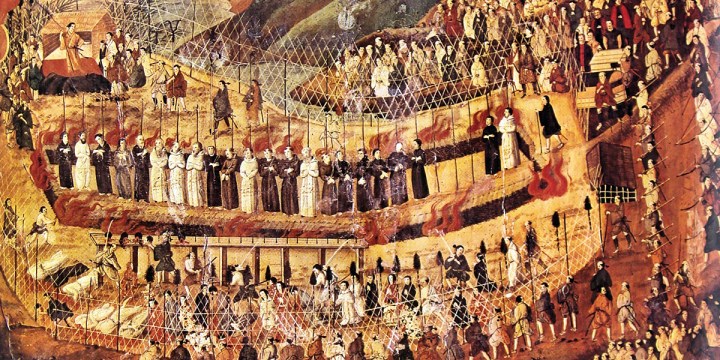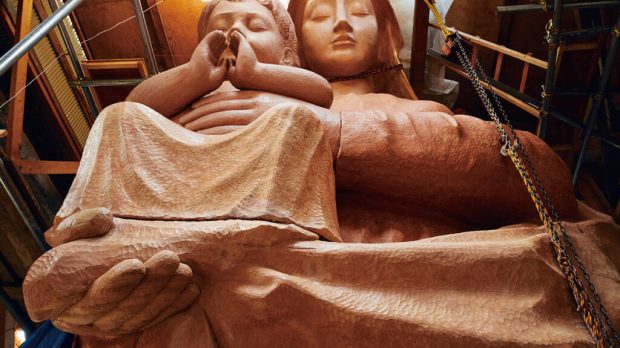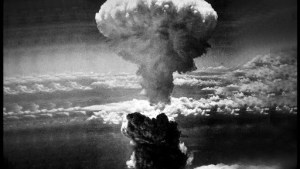Eighty-eight-year-old Japanese sculptor Eiji Oyamatsu has almost finished a wooden statue of the Virgin Mary nearly 10m (32 ft) tall. The image, which he started carving 40 years ago, is dedicated to the memory of thousands who died in the 17th century during the Shimabara Rebellion – an alliance of local ronin and Catholic peasants who fought the Tokugawa shogunate’s unpopular policies, including the suppression of Christianity and the consequent persecution of Nagasaki Christians. The Shogunate forces took Nagasaki, which was by then the main epicenter of Japanese Christianity.
Portugal and Japan started trading in 1543, the Portuguese being the first Europeans to reach the islands. This first trading period is often referred to as the Nanban Trade Period, in which the port of Nagasaki, through the initiative of the famed Jesuit Gaspar Vilela and the Japanese daimyo (feudal lord) Omura Sumitada (who had converted to Christianity), was ceded to the Society of Jesus. Being the only Japanese port open for foreign commerce, Nagasaki became the center of Japanese Catholicism.

When the Tokugawa fought the Shimabara Rebellion, broad areas of what are now Nagasaki and Kumamoto were swept. Japanese Christians and farmers had no other resource but to hole up in Hara Castle, to try to confront the troops sent by the Shogunate. More than 30,000 of the rebels were killed there, according to estimates. The remains of Hara Castle are in Minami-Shimabara, in Nagasaki, where volunteers decided to build a facility for Oyamatsu’s sculpture.
A Roman Catholic himself, Oyamatsu visited the remains of Hara Castle around 1971. According to The Asahi Shimbun, he was “struck by the absence of memorial monuments or other similar facilities at the site.” Ten years later, as Pope John Paul II visited Japan (including Nagasaki in his itinerary), Oyamatsu decided to make the gigantic statue of the Virgin Mary as a memorial.
Oyamatsu insists on working solo on the project, declining all offers of assistance or funding: “I want to see how far I can go with my own abilities. A climber wouldn’t have much fun if he were to take a helicopter to the summit, right?”
Oyamatsu named his statue “St. Mary Kannon of Hara Castle,” in reference to 17th-century images of Virgin Mary in the guise of Kannon, the Buddhist deity of compassion, which Nagasaki Christians kept after Christianity was banned.




